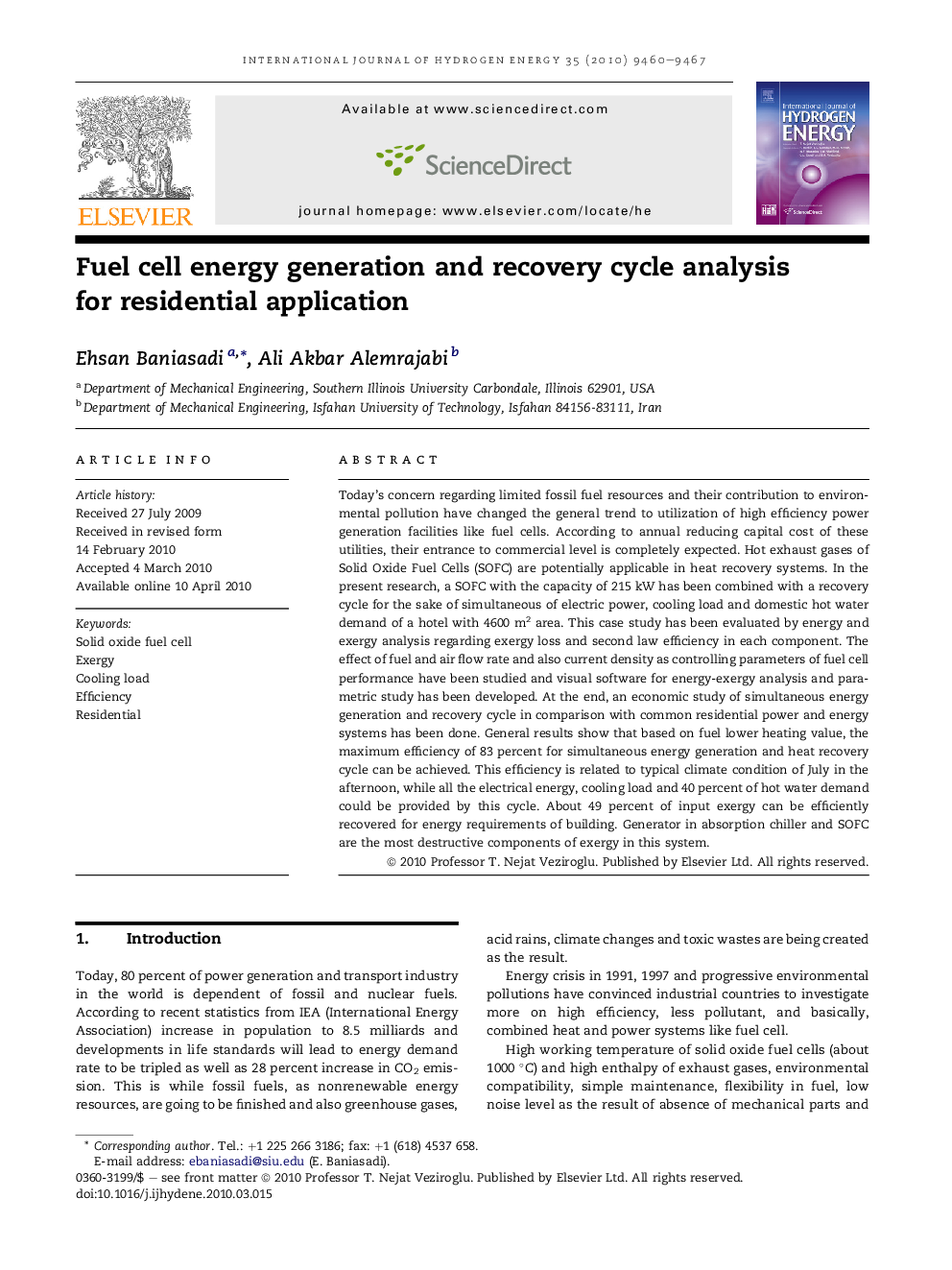| Article ID | Journal | Published Year | Pages | File Type |
|---|---|---|---|---|
| 1277006 | International Journal of Hydrogen Energy | 2010 | 8 Pages |
Today’s concern regarding limited fossil fuel resources and their contribution to environmental pollution have changed the general trend to utilization of high efficiency power generation facilities like fuel cells. According to annual reducing capital cost of these utilities, their entrance to commercial level is completely expected. Hot exhaust gases of Solid Oxide Fuel Cells (SOFC) are potentially applicable in heat recovery systems. In the present research, a SOFC with the capacity of 215 kW has been combined with a recovery cycle for the sake of simultaneous of electric power, cooling load and domestic hot water demand of a hotel with 4600 m2 area. This case study has been evaluated by energy and exergy analysis regarding exergy loss and second law efficiency in each component. The effect of fuel and air flow rate and also current density as controlling parameters of fuel cell performance have been studied and visual software for energy-exergy analysis and parametric study has been developed. At the end, an economic study of simultaneous energy generation and recovery cycle in comparison with common residential power and energy systems has been done. General results show that based on fuel lower heating value, the maximum efficiency of 83 percent for simultaneous energy generation and heat recovery cycle can be achieved. This efficiency is related to typical climate condition of July in the afternoon, while all the electrical energy, cooling load and 40 percent of hot water demand could be provided by this cycle. About 49 percent of input exergy can be efficiently recovered for energy requirements of building. Generator in absorption chiller and SOFC are the most destructive components of exergy in this system.
